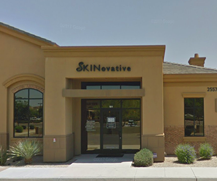Varicose veins are swollen veins; spider veins are swollen capillaries
What are spider veins?
Spider veins, also called telangiectasias, are superficial tiny blood vessels that appear as thin lines or thread-like networks of red, purple or blue in the skin. They may look like short, unconnected lines or branch out like a spider web. Spider veins are the smaller, milder version of varicose veins.
These dilated capillaries (blood vessels that connect small arteries and veins) are common on the back and sides of the thighs, legs and feet. They are easily recognizable in fair-skinned people and can be found in the face. Fine varicosities are more common in females.
Do they cause any problems?
Most spider veins are painless and present no symptoms. However, some may cause throbbing or a burning sensation, heaviness, itching and night cramps, especially when standing or sitting for long periods of time or wearing tight clothing. Just like large, varicose veins, spider veins may become prominent or swell to the skin’s surface and cause cosmetic problems. Most people have them removed for esthetic reasons.
What causes spider veins?
The real cause of spider veins is not completely known, although they seem to run in the family. Just like varicose veins, they generally appear with increased, persistent pressure in the capillary vessels. This happens with weight gain, prolonged sitting or standing, trauma or simply constricting clothes. Female hormones also contribute such that they may develop during puberty and pregnancy or when using birth control pills or hormone replacement.
Spider veins may form on their own or due to adjacent problematic veins. They can be associated with an underlying varicose vein.
Spider veins on the nose or cheeks of fair-skinned people may be related to sun exposure or prolonged use of steroid creams on the face.
How are they treated?
The most common reason people seek treatment is cosmetic. They are either treated with heat, laser or intense pulsed light or by injection of medication (sclerotherapy). Surgery is not been used with spider veins.
After treatment, spider veins will gradually fade and disappear. However, new spider veins may develop in the same area that will warrant additional treatments.
Can spider veins be prevented?
Although spider veins cannot be completely prevented, being careful with one’s lifestyle and minimizing risk factors will stop spider veins from developing. Avoiding constant pressure on the legs and feet will greatly prevent varicosities. Exercising and watching one’s diet will eventually pay off with legs that have no unsightly veins. Sun protection is very important to keep unwanted spider veins off the face.

